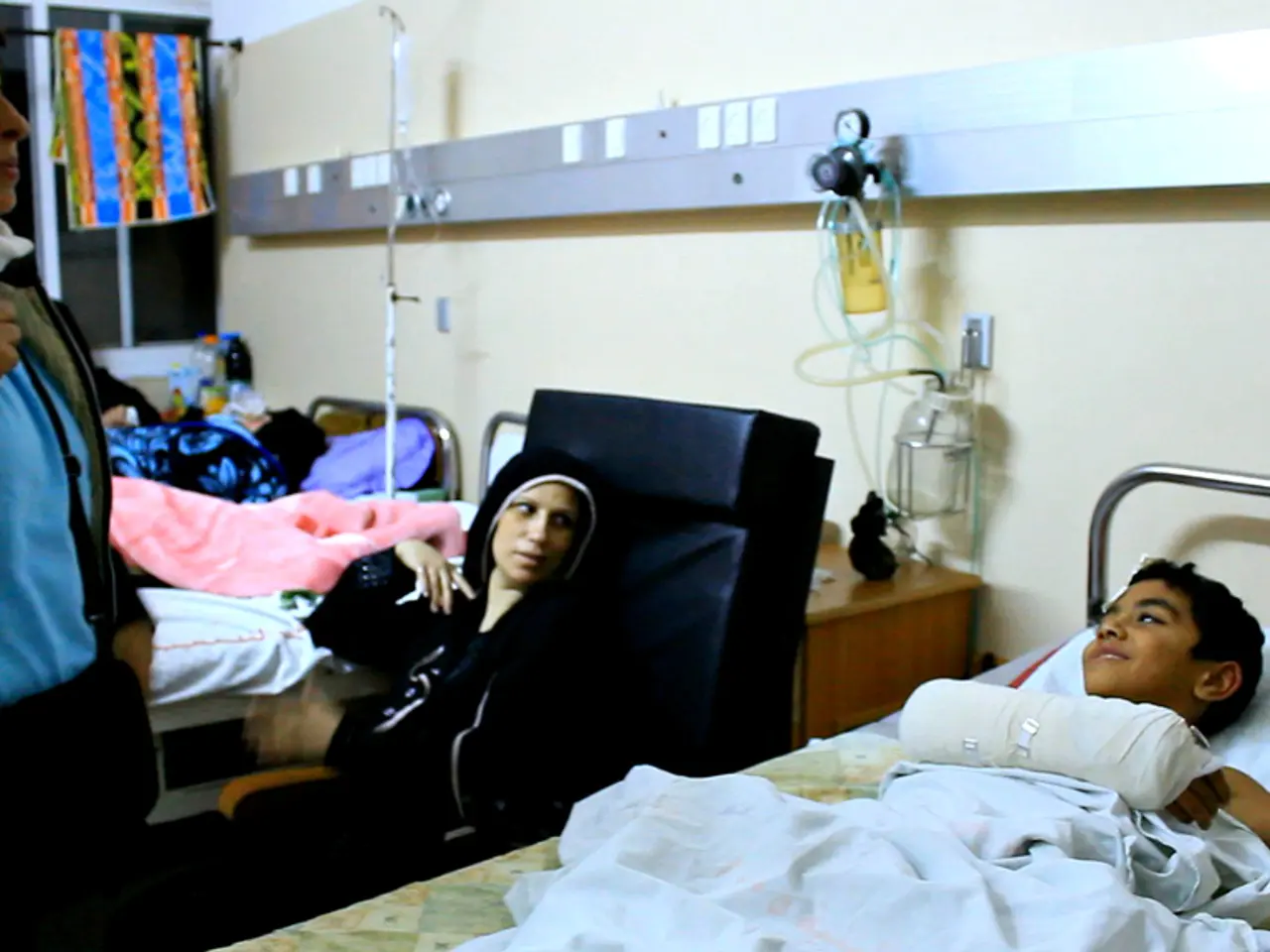Portugal witnesses a doubling of its medical workforce
Healthcare Workforce in Portugal: Age, Gender, and Geographical Distribution
Portugal's healthcare workforce shows significant patterns in age, gender, and geographical distribution, according to the National Institute of Statistics (INE).
Last year, the healthcare workforce in Portugal was composed of 26.6% of physicians over the age of 65 and 15.8% under 31 years old. This age distribution reflects a growing concern for healthcare sustainability due to the aging workforce.
Regarding gender, Portugal's healthcare workforce is becoming increasingly female-dominated, particularly in nursing roles. Women make up approximately 83% of registered nurses, with 36% aged between 31 and 45 years old. In the medical field, there has been an increase in the number of female doctors, although gender imbalances still exist in specialties and senior positions.
The INE reports that Portugal has attracted foreign healthcare professionals, with significant representation from Portuguese-speaking countries and Eastern Europe. In 2024, foreign professionals accounted for 0.9% of the total workforce, with 34.2% being Brazilian nationals.
The geographical distribution of healthcare professionals in Portugal is uneven, with retention issues in certain areas. In 2024, the Alentejo Litoral, Baixo Alentejo, and Lezíria do Tejo regions had the lowest rates of registered dentists, with 0.5 in all three cases. On the other hand, the Porto Metropolitan Area and the Viseu Dão Lafões region had the highest rates of registered dentists.
The number of medical professionals in Portugal has grown steadily over the years. In 1991, there were 28,326 medical professionals, reflecting an average annual growth of 2.5%. This growth is evident in the numbers, with 85,499 professionals registered with the Portuguese Dental Association in 2024, double the number registered in 2002. Similarly, the Portuguese Medical Association registered a total of 63,965 medical professionals in 2024.
In terms of specialization, almost two-thirds (62.4%) of the registered physicians held one or more specialties, subspecialties, or competencies in 2024. The Coimbra region had the highest proportion of resident doctors per 1,000 inhabitants in 1991, while in 2024, the ratio of doctors per 1,000 inhabitants was six.
The municipalities with the highest rates of active nurses per 1,000 inhabitants were primarily district capitals such as Coimbra, Portalegre, Guarda, Bragança, Vila Real, Beja, and Évora. The number of nurses corresponded to eight nurses per 1,000 inhabitants, with the highest figure in the Coimbra region (14.6).
The ratio of male physicians to female physicians has also shifted over the years. In 1991, the ratio was 148.8 men per 100 women, while in 2024, the ratio was 71.5 men per 100 women.
In the dental profession, the most represented nationalities among foreign dentists were Brazil (55.7%), Italy (14.1%), and Spain (6.5%).
The pharmacy sector also saw growth, with 17,101 professionals registered with the Order of Pharmacists in 2021, more than double the number in 2002. The proportion of women remained stable over the last 20 years, at around 80%.
In conclusion, Portugal's healthcare workforce is characterized by uneven geographical distribution, a growing female presence, an aging workforce, and the presence of foreign professionals, particularly from Portuguese-speaking countries and Eastern Europe. Detailed quantitative data on the current and historical trends, including exact age distributions and percentages by gender or nationality, can be found in INE's specialized health workforce statistical releases or official databases.
Science plays a crucial role in addressing medical-conditions, and the age distribution of Portugal's healthcare workforce, particularly the high proportion of older physicians and increasing number of younger ones, could significantly impact health-and-wellness in the future. As mental-health concerns rise globally, understanding the gender dynamics in the Portuguese healthcare workforce, such as the growing female dominance in nursing roles, becomes essential for creating an inclusive and effective health-and-wellness ecosystem.




